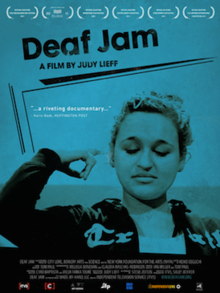
American Sign Language (ASL) is a natural language that serves as the predominant sign language of deaf communities in the United States and most of Anglophone Canada. ASL is a complete and organized visual language that is expressed by employing both manual and nonmanual features. Besides North America, dialects of ASL and ASL-based creoles are used in many countries around the world, including much of West Africa and parts of Southeast Asia. ASL is also widely learned as a second language, serving as a lingua franca. ASL is most closely related to French Sign Language (LSF). It has been proposed that ASL is a creole language of LSF, although ASL shows features atypical of creole languages, such as agglutinative morphology.
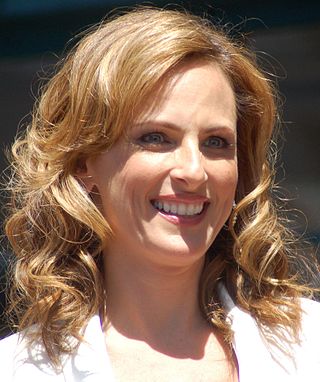
Marlee Matlin is an American actress, author, and activist. She is the recipient of numerous awards, including an Academy Award, a Golden Globe Award, and a Screen Actors Guild Award, in addition to nominations for a BAFTA Award, and four Primetime Emmy Awards.
Signing Exact English is a system of manual communication that strives to be an exact representation of English language vocabulary and grammar. It is one of a number of such systems in use in English-speaking countries. It is related to Seeing Essential English (SEE-I), a manual sign system created in 1945, based on the morphemes of English words. SEE-II models much of its sign vocabulary from American Sign Language (ASL), but modifies the handshapes used in ASL in order to use the handshape of the first letter of the corresponding English word.

Mark Pellington is an American film director, writer, and producer.
Hawaiʻi Sign Language or Hawaiian Sign Language, also known as Hoailona ʻŌlelo, Old Hawaiʻi Sign Language and Hawaiʻi Pidgin Sign Language, is an indigenous sign language native to Hawaiʻi. Historical records document its presence on the islands as early as the 1820s, but HSL was not formally recognized by linguists until 2013.
Christopher Browne, also known as Chris Browne, is an American documentary filmmaker and director. He is noted for directing the sports documentaries that "shed light on the oddballs and underdogs of the sporting world."

Maritime Sign Language is a sign language used in Canada's Atlantic provinces.

George William Veditz was an American educator, filmmaker, and activist who served as the seventh President of the National Association of the Deaf from 1904 to 1910. He is remembered as one of the most ardent and visible advocates of American Sign Language (ASL) and was one of the first people to film ASL. His 1913 film "Preservation of the Sign Language" was added to the National Film Registry in 2010.
Lior Shamriz is a writer, producer, and film director. They reside in Santa Cruz, California.

Jim Cohn is a poet, poetry activist, and spoken word artist in the United States. He was born in Highland Park, Illinois, in 1953. Early poetics and musical influences include Bob Dylan, the subject of a now lost audiotaped for a class project completed in his senior year at Shaker Heights High School, where he also co-captained the varsity football team. He received a BA from the University of Colorado at Boulder in English (1976) and a Certificate of Poetics (1980) from the Jack Kerouac School of Disembodied Poetics at Naropa University where he was a teaching assistant to Allen Ginsberg. He received his M.S. Ed. in English and Deaf Education from the University of Rochester and the National Technical Institute for the Deaf (NTID) in 1986. For over two decades, he worked in the field of disability services, taking a siddha approach as a model of Disability Services and Studies practice and scholarship. He believed that the social sciences should be redefined thematically within the United States into a form of American Karmic Studies.
American Sign Language literature is one of the most important shared cultural experiences in the American deaf community. Literary genres initially developed in residential Deaf institutes, such as American School for the Deaf in Hartford, Connecticut, which is where American Sign Language developed as a language in the early 19th century. There are many genres of ASL literature, such as narratives of personal experience, poetry, cinematographic stories, folktales, translated works, original fiction and stories with handshape constraints. Authors of ASL literature use their body as the text of their work, which is visually read and comprehended by their audience viewers. In the early development of ASL literary genres, the works were generally not analyzed as written texts are, but the increased dissemination of ASL literature on video has led to greater analysis of these genres.

Leena Manimekalai is an Indian filmmaker, poet and an actor. Her works include five published poetry anthologies and several films in genres, documentary, fiction and experimental poem films. She has been recognised with participation, mentions and best film awards in many international and national film festivals.
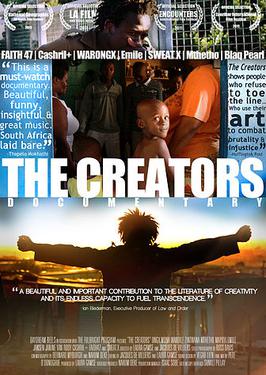
The Creators: South Africa Through the Eyes of Its Artists is a 2012 South African documentary film produced and directed by Laura Gamse which interweaves the lives of diverse South African artists including Faith47, Cashril+, Warongx, Emile Jansen of Black Noise, Markus Wormstorm and Spoek Mathambo of Sweat.X, Blaq Pearl, and Mthetho Mapoyi.
Ella Mae Lentz is a Deaf American author, poet, teacher, and advocate.
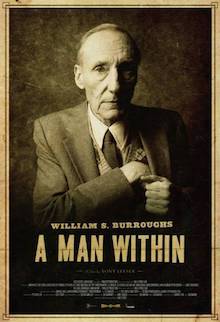
William S. Burroughs: A Man Within is a 2010 independent American documentary film directed by Yony Leyser about William S. Burroughs, featuring previously unreleased footage and interviews with his friends and colleagues.

Mea Maxima Culpa: Silence in the House of God is a 2012 documentary film directed by Alex Gibney. The film details the first known protest against clerical sex abuse in the United States by four deaf men. It features the voices of actors Jamey Sheridan, Chris Cooper, Ethan Hawke and John Slattery, who provide the voices of the deaf interviewees.
Lindsey Dryden is a British film director, producer and writer.

Manakamana is a 2013 documentary film directed by Stephanie Spray and Pacho Velez of the Sensory Ethnography Lab at Harvard University. It is an experimental documentary about pilgrims traveling on the Manakamana Cable Car between Cheres, Chitwan and the Manakamana Temple in Nepal. The film has been acquired for U.S. distribution by The Cinema Guild.
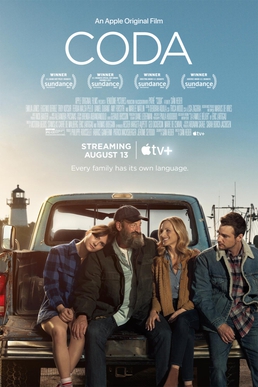
CODA is a 2021 coming-of-age comedy-drama film written and directed by Sian Heder. An English-language remake of the 2014 French-Belgian film La Famille Bélier, it stars Emilia Jones as Ruby Rossi, the child of deaf adults (CODA) and only hearing member of her family, who attempts to help her family's struggling fishing business while pursuing her aspirations to become a singer.

Troy Michael Kotsur is an American actor. Born deaf, Kotsur made his acting debut in the late 1980s working with the National Theatre of the Deaf. His television debut was in a 2001 episode of Strong Medicine and his film debut was in the 2007 thriller The Number 23.
